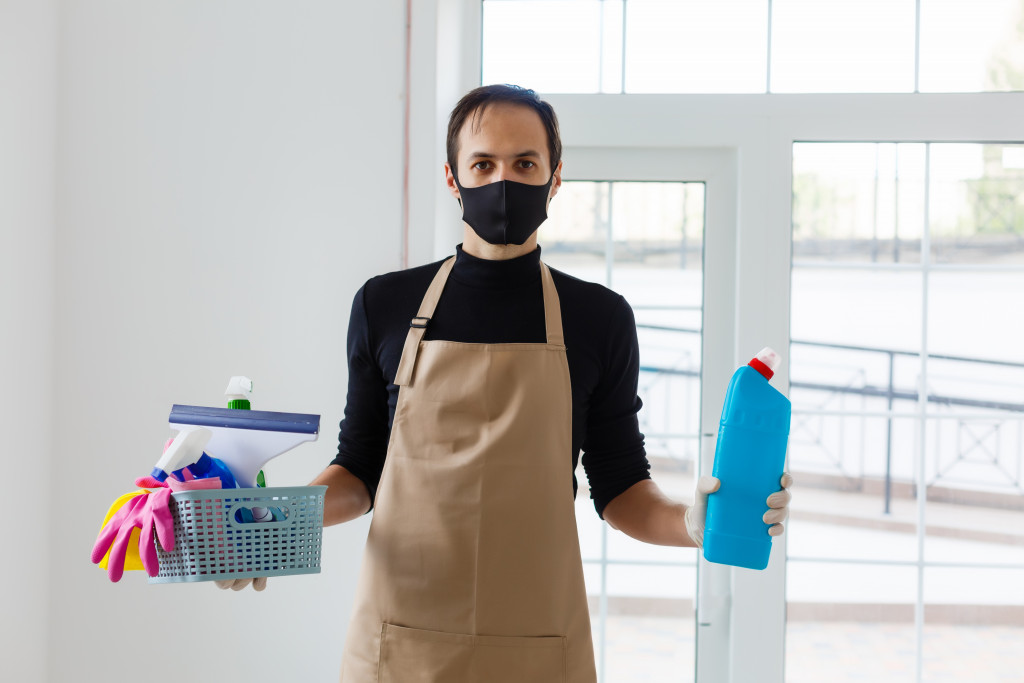• Poor hygiene, such as not washing hands properly and not disinfecting home surfaces, can lead to family sickness.
• Poor ventilation caused by dust clogging air filters and germs lingering in the air can spread illnesses among family members.
• Hard water with high levels of minerals and contaminated tap water with bacteria can cause health problems in your family.
• Installing water softeners and reverse osmosis systems can help ensure the safety of drinking water in your home.
If you’ve ever had the unfortunate experience of your entire family getting sick at once, then you know how frustrating it can be. It’s even worse when no one can seem to figure out why. With the medical and hospital bill piling, you just want some answers. The truth is, there are a lot of factors that can contribute to your whole family getting sick simultaneously. And understanding them can help you take steps to prevent it from happening again.
Poor Hygiene
One of the most common causes of family illness is poor hygiene. This isn’t just about not washing hands often enough; it’s also about ensuring that all home surfaces are regularly cleaned and disinfected. Here are things your family can do to ensure proper hygiene is maintained:
Proper and Frequent Handwashing
Yes, you wash your hands. But the question is: Do you wash them correctly? The CDC recommends washing your hands for at least 20 seconds with soap and warm water. This is especially important after using the restroom, before eating, and when handling food. To encourage the children, create an engaging handwashing song or game, or make an infographic that teaches the proper way to wash hands.
Encourage Regular Hygiene Routines
It’s not just about handwashing—it’s also important to encourage other hygiene routines, such as brushing teeth, hair, and nails. Ensure you have enough toothbrushes, soap, and towels for everyone in your family. Also, ensure everyone changes their towels, toothbrushes, and clothes regularly.
Regular Disinfecting of Home Surfaces
Germs can be transferred from one person to another via contact with home surfaces (e.g., doorknobs, counters, remote controls). To reduce the spread of germs, get into the habit of disinfecting all these surfaces every after use or contact.
Ensure your family has easy access to cleaning and disinfecting supplies, such as antibacterial wipes, sprays, and paper towels. Encourage everyone in the family to use them regularly on commonly used surfaces like door handles and kitchen counters.

Poor Ventilation
Another potential reason for the widespread illness is poor ventilation. Poor ventilation means that airborne germs have more opportunity to spread throughout the home, increasing the risk of everyone getting sick at once. Here are the common risks of poor ventilation:
Mold and Mildew Growth
Poor ventilation can lead to high moisture levels in the air, leading to mold and mildew growth. These microorganisms can cause various health problems in your family members, such as allergies, asthma attacks, skin irritation, and respiratory issues.
Buildup of Germs
Poor ventilation can also trap airborne germs in the home, increasing the risk of your family members getting sick. This is because the germs have nowhere to go, so they can linger in the air and on surfaces longer.
To improve ventilation, you must do the following:
- Dust, dirt, and other particles can clog up air filters, reducing the efficiency of your ventilation system. Make sure to regularly check and change the air filters in your home.
- Opening windows regularly will allow fresh air to enter the home and circulate throughout. This reduces the buildup of germs and keeps the air clean.
- Air purifiers can help remove airborne contaminants from home, such as dust and pollen. This reduces the risk of your family getting sick.
Poor Water Quality
One of the major reasons why your family might be getting sick is poor water quality. If the water in your home has impurities or contaminants, it may also have microorganisms that can cause illnesses. Some of the diseases that poor water quality can cause include diarrhea, dysentery, typhoid fever, and cholera. To ensure safe drinking water in your home, make sure to install these products for high-quality water:
Water Softener
Hard water contains high levels of minerals, such as calcium and magnesium. These can cause damage to your home’s plumbing system and leave behind deposits on fixtures and appliances, leading to health risks such as skin irritation and digestive issues. Water softeners can remove hard minerals from water, making the water easier to drink and reducing the risk of health problems.
Reverse Osmosis System
Chemicals and bacteria may be present in tap water, so it’s important to have a filtration system to remove these contaminants. Reverse osmosis systems are highly effective at removing impurities from the water and providing your family with safe drinking water. It acts as a multi-stage filtration system, which helps to remove even the smallest particles.
Addressing health risks immediately can help reduce the chances of your whole family getting ill. Knowing the potential causes of family illness is the first step in taking preventive measures. With this, you can reduce the risk of your entire family getting sick at once.

